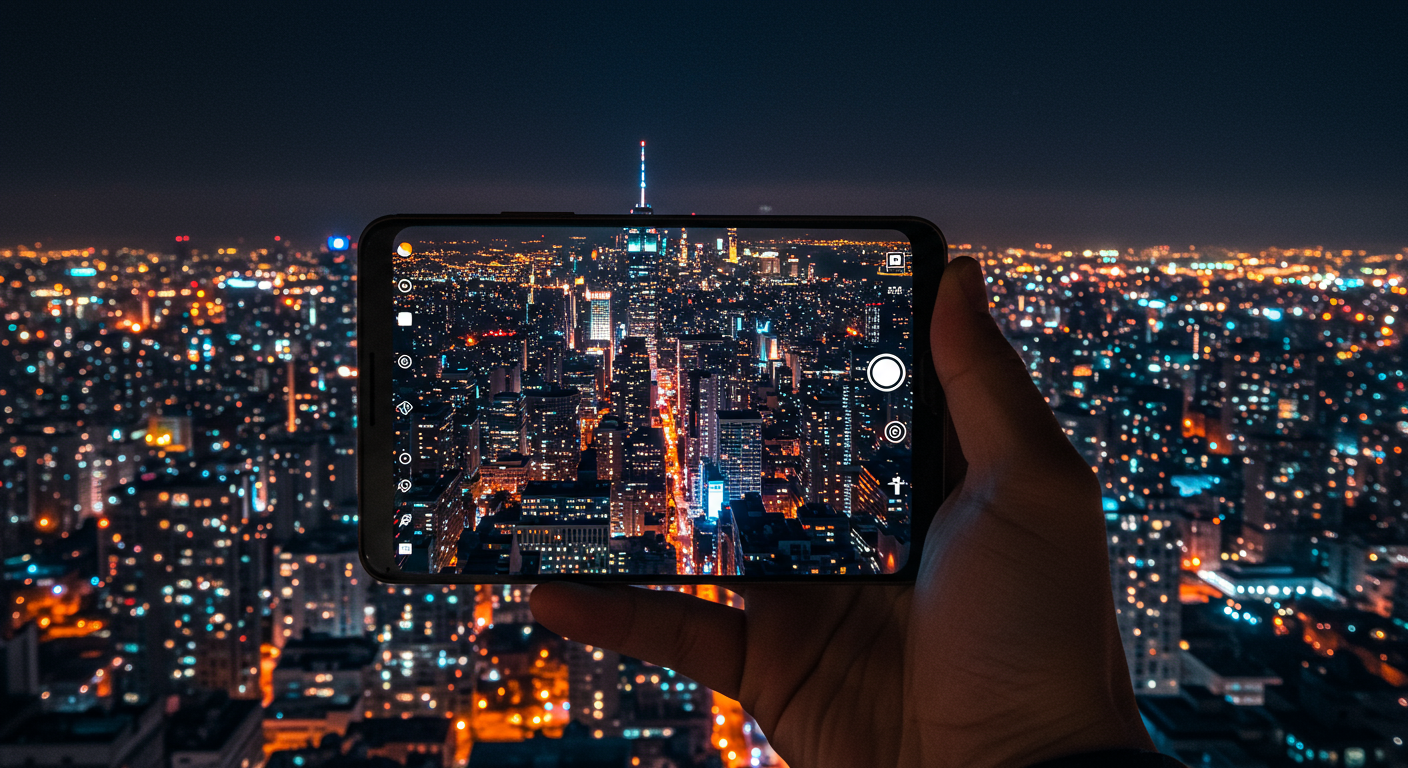Now Reading: Smartphone Photography Trends: Computational Photography, Mobile Editing, and Social Media
- 01
Smartphone Photography Trends: Computational Photography, Mobile Editing, and Social Media
Smartphone Photography Trends: Computational Photography, Mobile Editing, and Social Media

The Rise of Computational Photography
Computational photography is revolutionizing how we take photos with our smartphones. It moves beyond traditional optics to leverage software and algorithms to enhance image quality. Features like HDR (High Dynamic Range), Night Mode, and Portrait Mode are all powered by computational photography.
HDR combines multiple exposures to capture detail in both bright and dark areas, resulting in more balanced and vibrant images. Night Mode uses advanced algorithms to reduce noise and brighten images taken in low-light conditions, making it possible to capture stunning nighttime shots. Portrait Mode creates a shallow depth of field effect, blurring the background and focusing attention on the subject, simulating the look of a professional DSLR camera.
Newer advancements include technologies like object removal, scene recognition, and AI-powered enhancements that automatically adjust settings for optimal results. This allows for complex and automated image manipulation directly on your smartphone, blurring the line between amateur and professional photography.
Mastering Mobile Editing Workflows
The ability to edit photos directly on your smartphone has transformed the photography workflow. A wide array of powerful mobile editing apps offer tools for everything from basic adjustments to advanced retouching.
Popular apps like Adobe Lightroom Mobile, Snapseed, and VSCO provide comprehensive editing features, including:
- Exposure and contrast adjustments
- Color correction and white balance
- Selective editing
- Presets and filters
- Healing and cloning tools
Developing an efficient mobile editing workflow is crucial. Start by identifying the app that best suits your needs and style. Then, establish a consistent approach to editing, focusing on key adjustments like exposure, contrast, and color. Experiment with presets and filters to quickly achieve different looks. Finally, use selective editing tools to fine-tune specific areas of your image.
Social Media Sharing Strategies for Photographers
Sharing your photos on social media is a great way to showcase your work, connect with other photographers, and build a following. However, simply posting your images isn’t enough. You need a strategic approach to maximize your reach and engagement.
Here are some key strategies:
- Choose the right platform: Instagram is ideal for visually appealing photos, while platforms like Flickr cater to photography enthusiasts.
- Optimize your images: Ensure your photos are properly sized and formatted for each platform.
- Use relevant hashtags: Research and use popular and niche-specific hashtags to increase visibility.
- Engage with your audience: Respond to comments, ask questions, and participate in relevant communities.
- Post consistently: Maintain a regular posting schedule to keep your audience engaged.
- Tell a story: Add captions that provide context, share your inspiration, or ask thought-provoking questions.
Consider utilizing tools like Later or Buffer to schedule your posts and analyze your performance.
No products found.
Emerging Trends: AI and Machine Learning in Mobile Photography
Artificial intelligence (AI) and machine learning (ML) are increasingly integrated into smartphone photography, driving innovation and pushing the boundaries of what’s possible.
AI-powered features like scene recognition automatically identify the subject and adjust camera settings accordingly, optimizing for landscapes, portraits, or macro shots. AI-driven image processing can enhance image quality, reduce noise, and improve dynamic range. Generative AI is beginning to appear, allowing for features like background replacement and AI-powered object creation within images.
These technologies are making it easier for anyone to capture stunning photos with their smartphones, regardless of their technical expertise. As AI and ML continue to evolve, we can expect even more groundbreaking advancements in mobile photography.
Beyond the Basics: Accessories and Advanced Techniques
While smartphone cameras are incredibly powerful on their own, accessories and advanced techniques can take your photography to the next level.
Consider investing in:
- Tripods: For steady shots, especially in low light.
- Lenses: Wide-angle, telephoto, and macro lenses expand your creative possibilities.
- External lights: Improve lighting in challenging situations.
- Gimbals: For smooth video recording.
Experiment with advanced techniques like:
- Long exposure photography: Capture motion blur and light trails.
- Macro photography: Explore the intricate details of small subjects.
- Time-lapse photography: Create captivating videos of changing scenes.
- Using manual mode: Take complete control of your camera settings.
By combining the power of smartphone cameras with accessories and advanced techniques, you can create truly exceptional and unique images.
No products found.















